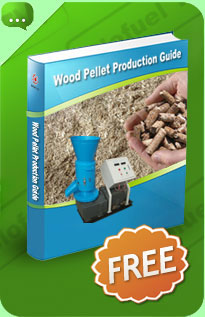Grass Pellet Mill
Grass pellets have been traditionally produced for animal feed; however there has been a growing interest in grass pellets for the pellet fuel industry. Grass pellet mill can have different features to wood pellet mills. Grass pellet mills generally operate at higher speeds than wood pellet mills. As grass has a lower density than wood, and is easier to gelatinise, higher productivities through higher die speeds can also be achieved, reducing the cost per ton of grass pellets.
Flat Die Pellet Mills or Ring Dies?
In many cases flat die pellet mills are chosen for grass pellet mills. One of the reasons for this is due to the very low cost of many flat die pellet mills from China. Flat die pellet mills work on a vertical design, with raw material entering the mill mainly through gravity. As grass is a low density material it is easier to get the grass into the compression chamber. Ring die pellet mills require a feed system, and therefore generally cost more. However ring die pellet mills have more control over the process and therefore pellet quality.
Grass Pellets Compared To Wood Pellets
Grass pellets have very different combustion characteristics to wood pellets for example. Grass pellets in general will produce much higher ash content, and possibly create a clinker and slag formations. Another aspect of grass pellets that must be looking at before using in a pellet stove or boiler is the increased risk of corrosion. During combustion many grass pellets will generate at a higher temperature corrosive, chloride. Most pellet stoves and boilers are designed to purely burn premium wood pellets. If grass pellets are used in most pellet stoves and boilers, accelerated corrosion could destroy the unit within a few years. For more information on pellet stoves and boilers which can burn grass pellets, please visit the Pellet Stove and Boiler Guide.
Hemp Pellets Offer an Alternative
Hemp pellets are one of the few exceptions to grass pellets in terms of their combustion characteristics. Hemp is used in the production of paper, plastics, clothes, rope, oil and even food. Hemp and waste hemp residues after processing can also be used to create fuel pellets. Hemp fuel pellets, unlike other grass pellets produce very little ash, no clinker or slag formations and a very low corrosion risk. These properties will see hemp pellets as key biomass fuel pellet in the future, competing with wood pellets.
Grass Pellet Production Guide
At Biofueltech we produce small scale pellet machines which can be used to produce grass pellets. Pellet production can be a tricky process, it relies on consistent quality materials, and the correct equipment and set-up. One of the best comparisons is pellet production is very similar to cooking.
With making grass pellets the first issue to address is trying to remove as much moisture from the raw material as possible. While pipe dryer and drum dryers can be used to remove moisture, this obviously uses more energy and therefore costs more. Trying to take out as much moisture as possible in the field is very important. A final flash drying maybe required though.

